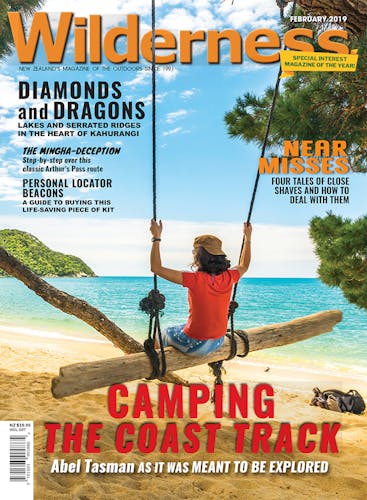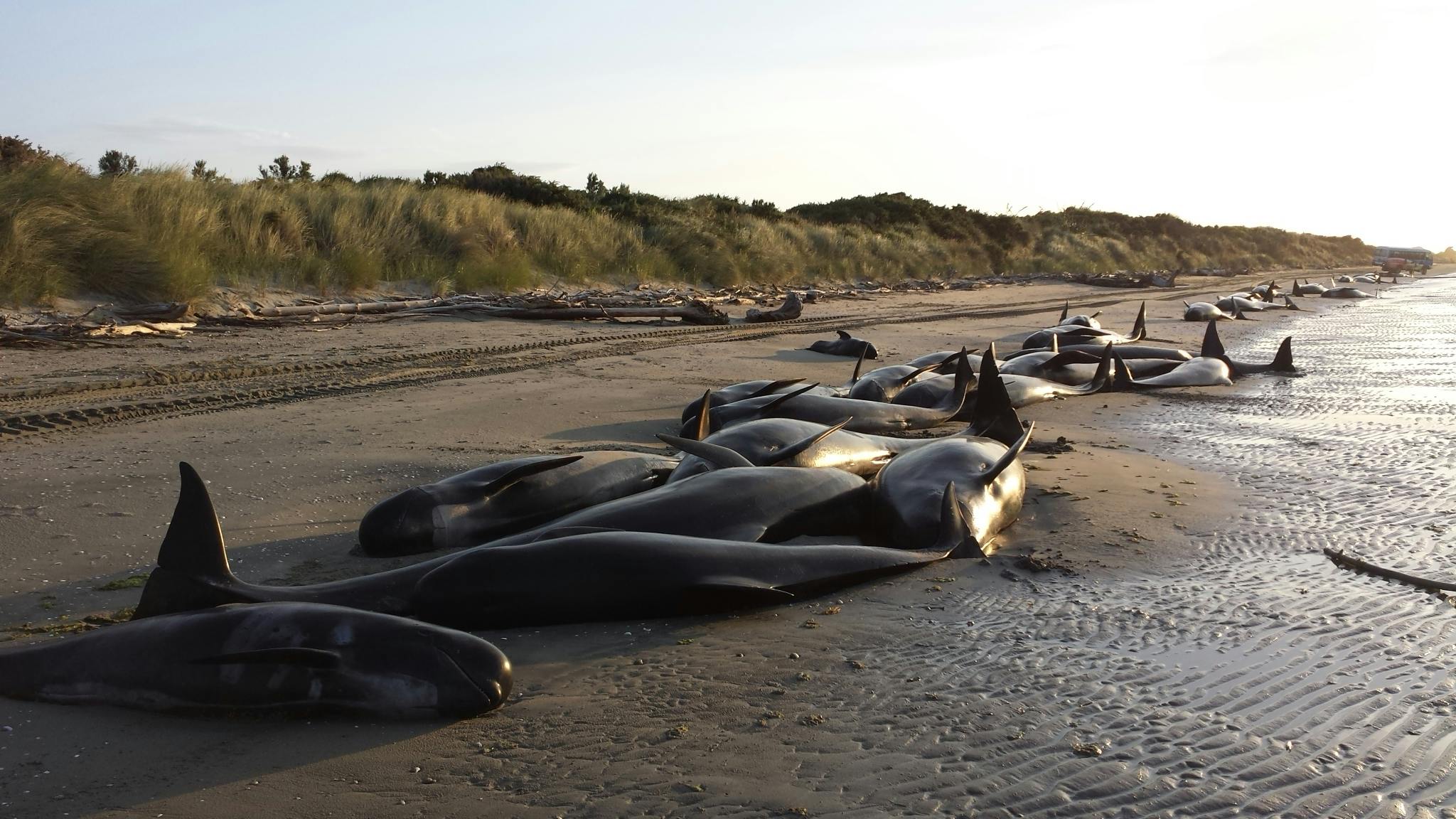New Zealand is world renowned for its mass whale strandings – its most recent being the Mason Bay tragedy on Stewart Island, which claimed 145 pilot whales.
While our stranding rate is unfortunately the highest in the world, so too is our rate of successful rescues.
Response time is critical for whale survival, and with stranding hotspots in Northland, Farewell Spit and Stewart Island, trampers are likely candidates to be the first humans to stumble across stranding incidents.
Motueka sea kayak guide Kyle Mulinder is a veteran of many strandings, and knows well the physical and mental challenges of a rescue attempt.
“Strandings can sound very romantic and exciting for a lot of people who want to rush in and play the hero, but when they get there they realise it’s very real and not all of them end in a movie finish. Some just end flat, and it’s pretty upsetting,” he says.
“The tide’s coming in, the winds are howling. You’re up to your chest in water and next to you is a giant whale thrashing around, and you don’t want to leave. Physically you should leave, but mentally you can’t.”
Mulinder encountered his first incident around a decade ago on Farewell Spit. Hearing the news of a pilot whale stranding, he gathered some mates, hopped in the car, and drove up to help.
It ended successfully, and the experience was a buzz for Mulinder, although he admits being unprepared for it at the time.
“There were so many things I was doing wrong that I thought I was doing right. I wasn’t aware of the strength of these beasts,” he says.
Now experienced in whale rescue, Mulinder is often one of the first respondents called to strandings in the Golden Bay area, alongside DOC and Project Jonah volunteers.
Nothing can prepare you psychologically for an unsuccessful rescue, he says.
“When it’s a positive outcome it’s easy. But when you spend a couple of days with one animal, you start to feel a connection and when it doesn’t work out, it’s heart wrenching,” he says.
Project Jonah general manager Daren Grover advises seeking help above all else, if you’re first on the scene.
In remote areas where reception is limited, getting help might mean climbing a hill for signal or walking to the nearest DOC hut or road end, but without assistance, there is only so much one person can do.
“If possible, write a message in the sand or with rocks to say you’ve gone for help, and include the time and date. If somebody else shows up, they will know they can stay with the whales because help is on its way.”
Using a PLB might seem an appropriate response, but Grover would not suggest it, saying the help summoned wouldn’t be equipped to deal with a stranding, and contacting DOC or Project Jonah directly is preferable, even if it takes longer to orchestrate.
While strandings feel like a race against time, Grover says whales are resilient enough to survive for days, or even weeks, on a beach if they’re kept cool, and it’s better to wait for the appropriate equipment, rather than attempting to return them to the water by hand.
“If you try and move them on your own, you’re likely to increase their stress, hurt yourself, or even get swiped by their tail – the most powerful muscle in nature.”
Once contact is made, be as descriptive as possible, and include your location and landmarks, the number, size and description of the whales, Grover says – the response issued will vary greatly depending on the species, size and number of whales stranded.
Stumbling on a stranding can be an emotional experience, but it’s important not to put yourself at risk for the sake of the whales.
“No matter how many times we receive a phone call [to report a stranding], when you can hear the whales calling in the background, it’s quite an intense and emotional moment.
“If you stay with the whales, don’t overextend yourself emotionally or physically, and pay attention to the supplies you have.”
Once help is organised, keeping whales cool is the top priority.
“Pour water over their bodies to keep their skin looking shiny, rather than matte – the number one reason a healthy whale will die is because it’s heating up,” Grover says.
Avoid pouring water in the animal’s blowhole when open, and pay particular attention to flippers, fins and flukes, where blood vessels are closest to the skin.
Trampers may be able to use their cooking pots, boots or dry bags as water receptacles to cool the whales.








